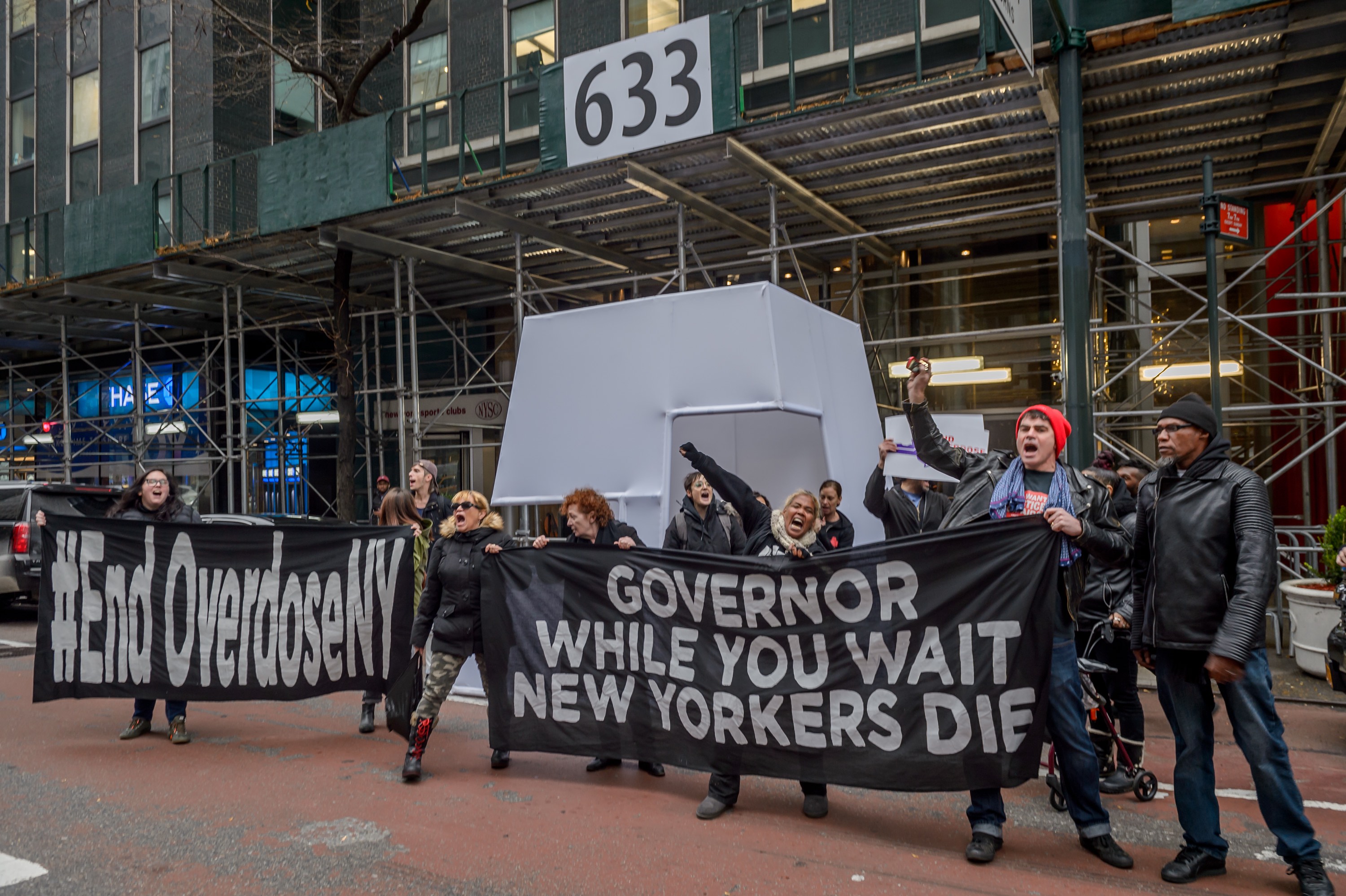The fight for safer consumption spaces in New York looked promising in October, after Governor Andrew Cuomo expressed tentative openness to them in a gubernatorial debate. Then he won reelection in early November. He has not taken action since.
That’s why on Monday, November 26, activists—including members of VOCAL-NY and photographer Nan Goldin, who once suffered a nonfatal fentanyl overdose after years of OxyContin use—staged a speak-out outside Governor Cuomo’s New York City office.
“You are forcing people to die every day while you wait for the proper political climate!” yelled Levele, a participant in the speak-out. The protesters set up a pop-up mock overdose prevention center outside the office, illustrating how easy it would be to implement lifesaving services.
“Gov. Cuomo has not yet authorized the Department of Health to let Overdose Prevention Centers move forward to help prevent needless overdose deaths,” says Melissa Moore of the Drug Policy Alliance. “That’s really all that’s needed to proceed.”
It wasn’t easy to get to this point. New York City Mayor Bill De Blasio was the subject of protests last spring, where activists demanded that he release a plan for four “supervised injection facilities” in New York City.
“You wait! We die, @NYCMayor!”—Advocates demanding that the Mayor take action, say #YestoSCS, which have been proven to save lives, and finally #EndOverdoseNY pic.twitter.com/WT97ScYkhh
— Housing Works (@housingworks) May 2, 2018
De Blasio did release the plan in May. It designated SCS sites in Washington Heights and Midtown West in Manhattan, the Longwood section of the Bronx, and Gowanus, Brooklyn. Operating for a one-year pilot period, the sites would have clean and safe consumption supplies, and staff available to administer naloxone and help clients access resources. They would open only after six-to-12 months of outreach in the communities. But according to Jasmine Budnella of Vocal-NY, the timeline and process is still unclear.
In 2016, Ithaca Mayor Myrick also introduced a plan for a pilot SCS. For the last six months, Ithaca and New York City have been waiting for the state’s Department of Health to approve the pilots.
While legislative alternatives—such as a State Assembly bill that would allow local authorities to determine the terms and conditions of SCS—exist, Cuomo’s executive authorization would be the fastest path to implementing SCS in New York.
The governor has the power to direct funds to programming to address an emergency; the power was exercised to establish syringe exchange programs during the 1990s HIV/AIDS crisis. Today, with one New Yorker dying from overdose every six hours, activists argue that use of the power is again justified and needed.
Cuomo has so far shown willingness only to drag his heels, so the protests are set to continue. On Tuesday, November 27, “multiple digital billboards in Times Square will be running a message from the EndOverdoseNY coalition calling on the governor to give the gift of life this holiday season by taking action on SCS immediately,” says Moore.
The coalition hopes that the governor will give authorization by the year’s end. Budnella says that activists are prepared to perform civil disobedience if Cuomo continues to hold back. “We will continue to pressure until we get this life-saving resource.”
Photograph: ERIK MCGREGOR PHOTOGRAPHY





Show Comments